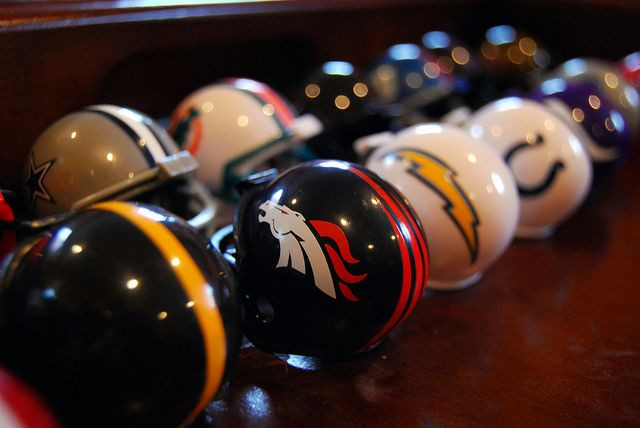NFL Concussion Lawsuit Gets Preliminary Approval; Federal Judge Removes Cap On Claims

A federal judge on Monday approved a landmark settlement in the ongoing concussion lawsuit between ex-professional football players and the National Football League (NFL). Under the preliminary terms, thousands of retired athletes are slated to receive compensation money for the brain injuries they sustained during their careers.
For much of the last decade, brain injury among ex-athletes has been the elephant in the room. As medical science learns more about how cognitive processes degrade with repeated, sub-concussive hits, the NFL has, for the most part, stayed silent. It wasn’t until 2011 that more than 4,500 retired athletes came forward and sued the league, claiming they didn’t know how dangerous football was to their lifelong health.
In August of last year, the pressure began to overwhelm the league. The NFL proposed a $765 million settlement, which would dish out cash to injured retirees to help cover their medical expenses. A small reserve was also set aside for medical research and the cost of future medical exams. The total payout stood at $870 million. A judge shot it down.
The new settlement strips the deal of the cap on compensation claims, meaning the league no longer has a maximum payout figure. Instead, U.S. District Judge Anita Brody ruled the league must adhere to a specific formula, which would determine the appropriate dollar amount based on the athlete’s age and injury. A young retiree with amyotrophic lateral sclerosis, or Lou Gehrig's disease, for instance, would receive $5 million. An 80-year-old with early dementia would get $25,000.
Given the uncertainty of future injuries, mixed with those already present and show no signs of slowing, let alone stopping, Brody argued a settlement made more sense than seeing the lawsuit through. "A class action settlement that offers prompt relief is superior to the likely alternative,” she wrote. These include “years of expensive, difficult, and uncertain litigation, with no assurance of recovery, while retired players' physical and mental conditions continue to deteriorate.”
Since it was first diagnosed in 2002, the poster child illness for ex-football players has been chronic traumatic encephalopathy, or CTE. It’s a neurodegenerative disease, similar to Alzheimer’s, but it can only be diagnosed postmortem. Over and over, scientists studying CTE have found traces of the disease in the brains of former football players, boxers, and hockey players. They’re the type of injuries that can only come from constant blows to the head — small but traumatic hits in the form of headfirst tackles and uppercuts that slam the brain against the skull, damaging the organ forever.
The new settlement marks the first legal change in how the NFL addresses its dying retirees. To combat the problem inside the game, in March of 2013 the league banned the form of tackling in which a player leads with the crown of his helmet. Violation of the rule carries a heavy fine for the player and a 15-yard penalty for the team.
Many sports analysts, however, have criticized the rule for its spotty enforcement and subjective measure. Even star players, who were subjected to massive hits each game, have disagreed with the rule, calling it an impossible requirement that stops football from being football, even if it is meant to keep them alive.
“I disagree with the rule altogether,“ said Emmitt Smith, the NFL’s all-time leading rusher, to KRLD-FM when the rule was announced. “It doesn’t make any sense for that position. It sounds like it’s been made up by people who have never played the game of football.”



























